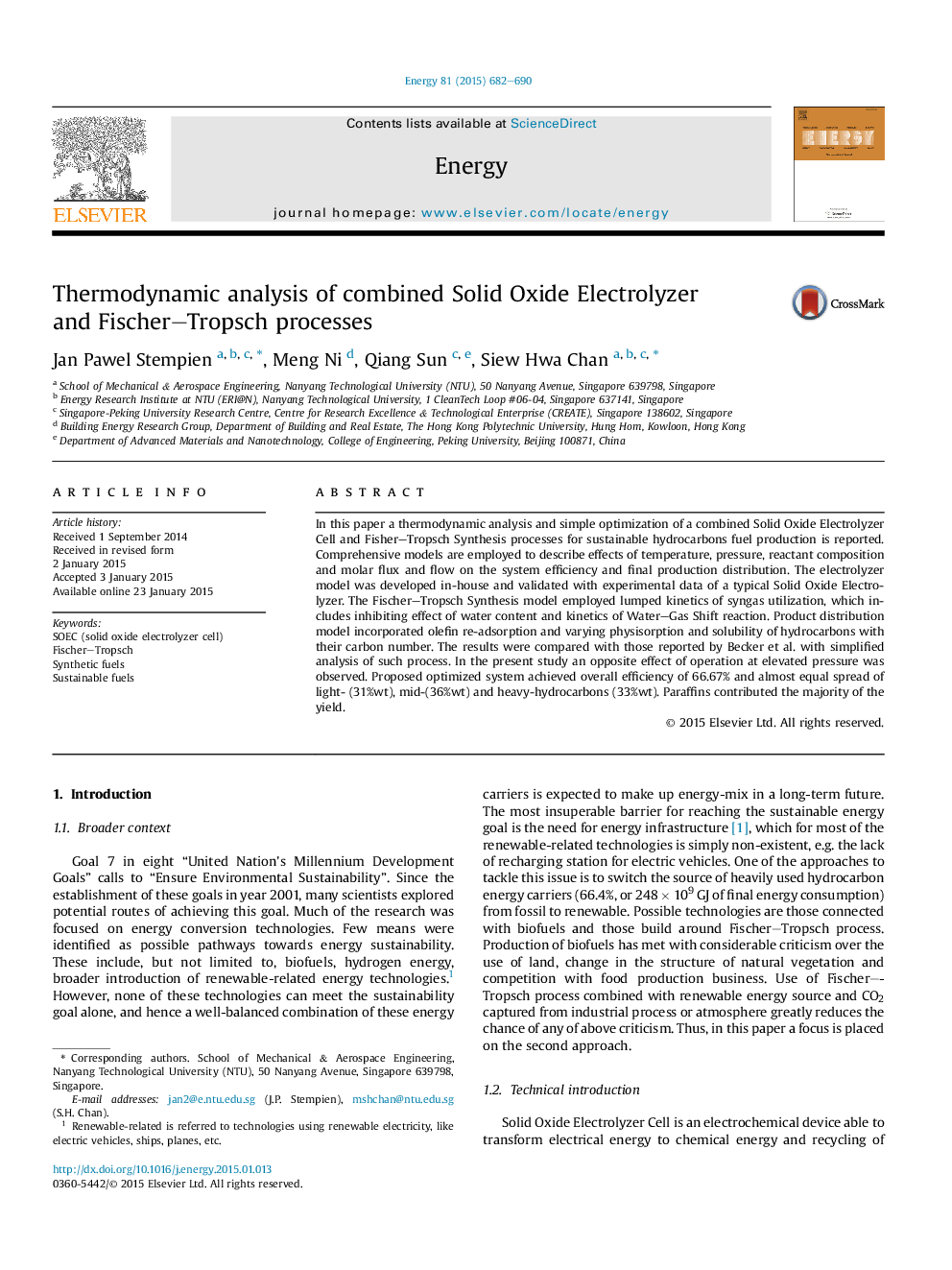| Article ID | Journal | Published Year | Pages | File Type |
|---|---|---|---|---|
| 8075740 | Energy | 2015 | 9 Pages |
Abstract
In this paper a thermodynamic analysis and simple optimization of a combined Solid Oxide Electrolyzer Cell and Fisher-Tropsch Synthesis processes for sustainable hydrocarbons fuel production is reported. Comprehensive models are employed to describe effects of temperature, pressure, reactant composition and molar flux and flow on the system efficiency and final production distribution. The electrolyzer model was developed in-house and validated with experimental data of a typical Solid Oxide Electrolyzer. The Fischer-Tropsch Synthesis model employed lumped kinetics of syngas utilization, which includes inhibiting effect of water content and kinetics of Water-Gas Shift reaction. Product distribution model incorporated olefin re-adsorption and varying physisorption and solubility of hydrocarbons with their carbon number. The results were compared with those reported by Becker et al. with simplified analysis of such process. In the present study an opposite effect of operation at elevated pressure was observed. Proposed optimized system achieved overall efficiency of 66.67% and almost equal spread of light- (31%wt), mid-(36%wt) and heavy-hydrocarbons (33%wt). Paraffins contributed the majority of the yield.
Related Topics
Physical Sciences and Engineering
Energy
Energy (General)
Authors
Jan Pawel Stempien, Meng Ni, Qiang Sun, Siew Hwa Chan,
